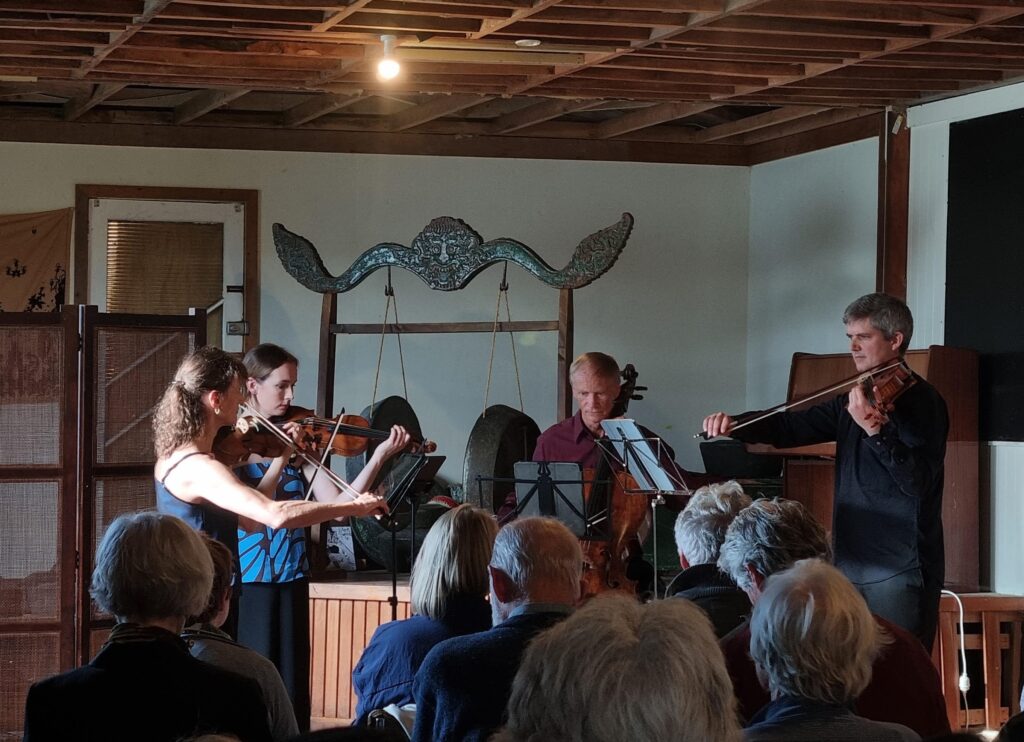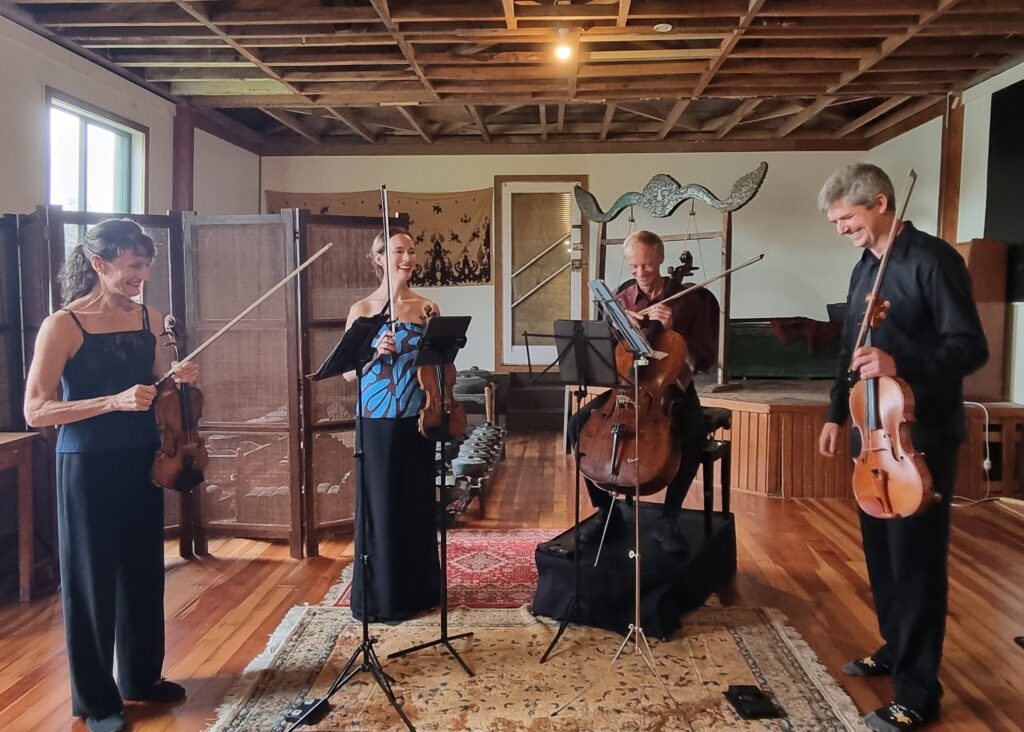Darkness to light never brought so much relief! – from Shostakovich to Mozart via Ross Harris, at Roseneath’s Long Hall
Comfy Concert #8 from the Chamber Pot-Pourri Ensemble
DMITRI SHOSTAKOVICH – String Quartet No. 15 in E-flat Minor
ROSS HARRIS -Long Hall Quintet 2025
WOLFGANG AMADEUS MOZART – String Quintet in C Major KV 515
Helene Pohl, Donald Armstrong, violins
Nicholas Hancox, Chris van der Zee, violas
Rolf Gjelstan, ‘cello
Special Guest Item – KASTURUN (Traditional Javanese composition)
(performed by The FIrst Smile Gamelan Ensemble)
The Long Hall, Roseneath, Wellington
Saturday 15th November 2025
Kaibosh Food Rescue Benefit Concert
This eighth and final 2025 Comfy Concert marked the 80th anniversary of The Long Hall (built in 1945) and called for a special presentation, which the organisers and musicians involved responded to with memorable and resonant results! Violinist and founder of the “Comfy Concert” Series Helene Pohl shared with us in a programme note details of both the year’s performances and the successes of the concert’s affiliated Charity Kaibosh Food Rescue, and its associated colleague organisation Arohanui Strings, as well as introducing all of today’s performers, including a Special Item from the First Smile Gamelan Ensemble which concluded the concert.
Though not officially sporting the title “From Darkness to Light” today’s presentation couldn’t have been better described in terms of its overall trajectory. Beginning with the Fifteenth and final String Quartet of Dmitri Shostakovich, the occasion brought to us the uniquely fascinating culmination of the composer’s epic but sadly unfinished journey towards realising his dream of producing a string quartet in each of the twenty-four keys. We were confronted right at the outset with a work that itself all too readily seemed to proclaim that “this was the end” for its composer.
Both the work’s genesis itself and preparations for its first performance were instigated under profound difficulties, and not only for Shostakovich, with his by then recurring health problems (the work was finished in May of 1974 while he was convalescing in a Moscow hospital). At this time Sergei Shirinsky, the cellist of the Beethoven Quartet (the group to whom the composer had entrusted the premieres of nearly all his quartets) was himself already ill after suffering a heart attack earlier that same year, and died not long after the group had begun rehearsals of the work. Shostakovich had to reassign the work’s premiere to another ensemble, the Taneyev Quartet, to whom he had previously shown the work as well, and who were thus able to fulfil the task in November 1974.
Every detail of the quartet contributes to its singular character – all six or its movements are marked Adagio, with the fifth movement, Funeral March, given the extra descriptive weight of Adagio molto. All are in the key of E-flat Minor, and are played without a break, adding to the concentration of intensities throughout. As well, the Quartet gave the work here in the relative gloom of shuttered windows and drawn curtains, heightening the almost funereal atmosphere of the music’s world – not that there was absolute stasis throughout the work, which in places demonstrated both agitated and heavily louring trajectories – but all such impulses were transfixed, encapsulated throughout in a kind of over-riding heartbeat of inexorable transience….
Interestingly, Shostakovich’s instructions to the performers were recorded as “Play the first movement so that flies drop dead in mid-air and the audience leaves the hall out of sheer boredom” – however, I felt entranced instead, charmed by the quasi-hymn-like lines and their evanescent harmonies, and definitely left not wanting to leave! But then, with the Serenade, introduced by the first violin’s sforzando-like exclamation, followed by several of the others’ similarly disconsolate cries (even the ‘cello joins in, after some initial hesitation!), the “dream” took a darker turn, the waltz-tune that follows fraught with anxiety, as were the aggressive pizzicati that punctuated the continued sforzandi! The Intermezzo (superbly addressed by Helene Pohl’s frenzied figurations!) felt for much of the time in the nature of sharing a space with a trapped and frightened animal, before calm returned, and the Nocturne’s wonderfully “haunted”, almost creepily luscious melody was sung on Nicholas Hancox’s sonorous viola, before the ensemble took the music on a kind of “walk on the wilderness side” – a real “fled is that music? – do I wake or sleep?” moment in the work!
The Funeral March grandly reclaimed the work’s focus with both viola and ‘cello soliloquising in between the solemn, more “publicly-delivered” ensembled statements – Rolf Gjelsten’s cello eloquently voiced the private emotions of the music in contrast with the grander outbursts, everybody “chording” passionately and ambiently, while the solo instruments gave utterance to their individual lines. How like the composer to then counter such focused moments of both public and private feeling with an Epilogue which returned us, as here, to the uncertainty of life’s existence!
Helene Pohl’s frantic agitated salvos at the movement’s beginning unnervingly took us into a kind of bedlam out of which we heard snatches of the work’s opening hymn-like chanting, with Donald Armstrong’s violin desperately trying to reclaim what seemed like a distant memory – one that was obscured by the cello’s churning disquiet from the depths, and the violins’ disconsolate duetting – but we were also diverted by the onset of strangely fairy-like agitations, unquiet spirit voices which unnervingly haunted both solo lines and the ensemble’s briefly-concluding chorale-like note.
At the end, one could only sit and reflect in the silences that “surged softly backwards” at what visions, strains and impulses the composer had seen fit to characterise as his “swan-song” in this genre……very great honour and credit to the players for taking us with them to what felt like such unnerving degrees of visceral immediacy! (Incidentally the Quartet was, in fact not “the end” for its composer, as its music seemed to suggest – the following year he completed a Viola Sonata Op.147, a work dedicated to Fyodor Druzhinin, violist of the aforementioned Beethoven Quartet – sadly Shostakovich died
in hospital within a month of finishing the work and without ever hearing it performed.)
This concert enjoyed a “thrice-blessed” aspect – not only had we participated in the tribute played by the series to a great twentieth century composer, but we could then witness and enjoy another “tribute”. This came from Wellington composer Ross Harris who had attended several of these “Comfy Concerts and been inspired by a number of features which gave the occasions their singular kind of distinction – the composer himself made reference to the distinctive charm of the hall and the miracle of its preservation as a community resource, as well as representing a bulwark standing firmly in support of musicians who were presently experiencing “tough times”. With Shostakovich himself being a kind of embodiment from a different era of “tough creative artist times”, his quartets’ performances seemed here more than apposite – though Ross confessed that his main stimulus in composing for the venue a commemorative work was hearing at one of the earlier concerts a string quintet by Mozart! Of course it all fell together very nicely when in tandem with another of the divine Wolfgang’s quintets programmed to finish this concert.
Beginning with a ‘cello solo, the music resonated through the instruments in turn, with the second violin inverting the melody and modulating entrancingly, even toying with a kind of “re-inversion”! A running theme from the violins was cheered on by a pizzicato viola figure, before a chorale-like section proposed further inversions decorated by beautiful descending pizzicato notes – I liked the Ravelian touch of violin and viola in unison octaves, and the dance-like sequence underlined by the pizzicati. Even Schoenberg’s Verklarte Nacht came to mind at one point, with an extended viola solo taken further by the ‘cello, a few breaths of mosaic-like textures fixedly engaging our sensibilities. Then, a square-dance theme danced across the spectrum, eventually giving way to a dream-time sostenuto mood, achingly sustained into a silence. One needs, of course, further hearings to “place” these detailings more coherently, but on first acquaintance each seemed to me delightedly satisfied with its own “moment” in time and space, and along with its composer at the end were given all due appreciation.
The Mozart Quintet which followed was not one I’d heard for some time, and I’d forgotten just how extraordinarily detailed both the first movement exposition and development were – such rapid-fire modulations which at one and the same time “flowed like oil” and took one by surprise with their adventurousness, such as the major-to-minor contrasts of the opening theme, and tne “light-as-a-feather” touchings and elaborations of the second subject – beautiful playing in thirds in so many places, after all of which the insouciance of the ending was an all-the-more delightful touch.
The Minuetto, brisk and athletic, seemed straightforward enough until the onset of the Trio’s churning chromaticisms! – what were these, and where was it all leading to? Had Mozart lived longer he might well have further anticipated Beethoven’s “new paths” and perhaps even bypassed some of it in taking his own way! The Andante is largely an amiable dialogue between Helene Pohl’s violin and Nicholas Hancox’s viola, with Rolf Gjelsten’s ‘cello counterpointing the viola to mellifluous effect in places – while the finale is a truly ensemble affair, with crisp, energy-sharing exchanges involving plenty of major-minor variants of phrase-swapping, and nifty thirds bounced in tandem by the “pairs” racing around and about the anchoring cello – it was all so memorable and celebratory and, and boded well for continuation of “the same but different” at the “Long Hall” in seasons to come!
Finally came the third of the “tributes” which helped give this occasion its distinctive flavour – this was a special performance item featuring “The First Smile”, the name taken by the gamelan ensemble whose instruments and regular performance activities are centered around “The Long Hall”, which is now established as the group’s home. The Instruments were first brought to Aotearoa New Zealand in 1974 by Allan Thomas, Senior Lecturer in Ethnomusicology at Victoria University of Wellington from Cirebon, West Java, who had located the instruments from a collection of heritage items held on location at a once-active royal court, and with the help of fellow-ethnomusicologist and composer Jack Body organised their purchase and transportation to New Zealand.
The instruments are played regularly by a small group of dedicated musicians, as well as by students from Roseneath School (The Young Smile) and preschoolers and new entrants (The Little Smile). In December 2024, The First Smile released an album of compositions for the ensemble, available through Rattle Records as a CD or digital download.
This afternoon we heard the ensemble perform Kasturun, a traditional Javanese composition, said to evoke an image of angels standing in heaven, a conjuring up of traditional imageries wrought by musical structuring which employs repetitions of the same motif. The sonority of the instruments was partly determined by their different sizes, resulting in vastly different kinds of timbres associated with particular images and emotions – endlessly resonant evocations and fascinations drew us into an interior world of a different order to that which we’d experienced earlier in the afternoon, and we couldn’t hep but feel refreshed and reinvigorated by the experience of renewed gratitude for yet another aspect of “The Long Hall” and its bounty.
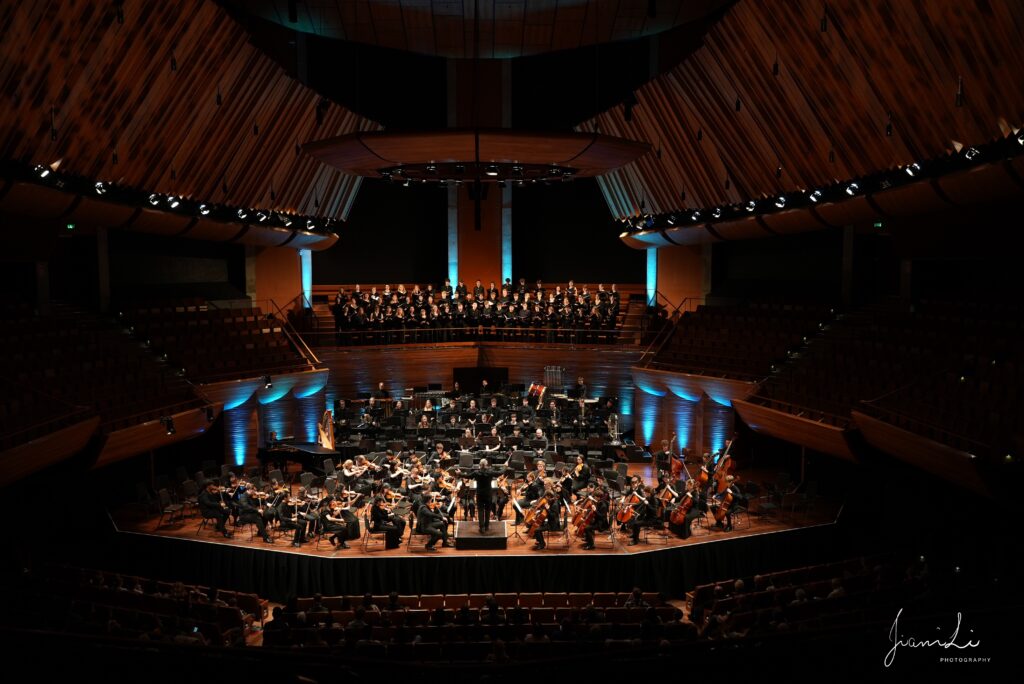 WYO/WYS/WYC at the Michael Fowler Centre, October 2025 – photograph: Jiani Li
WYO/WYS/WYC at the Michael Fowler Centre, October 2025 – photograph: Jiani Li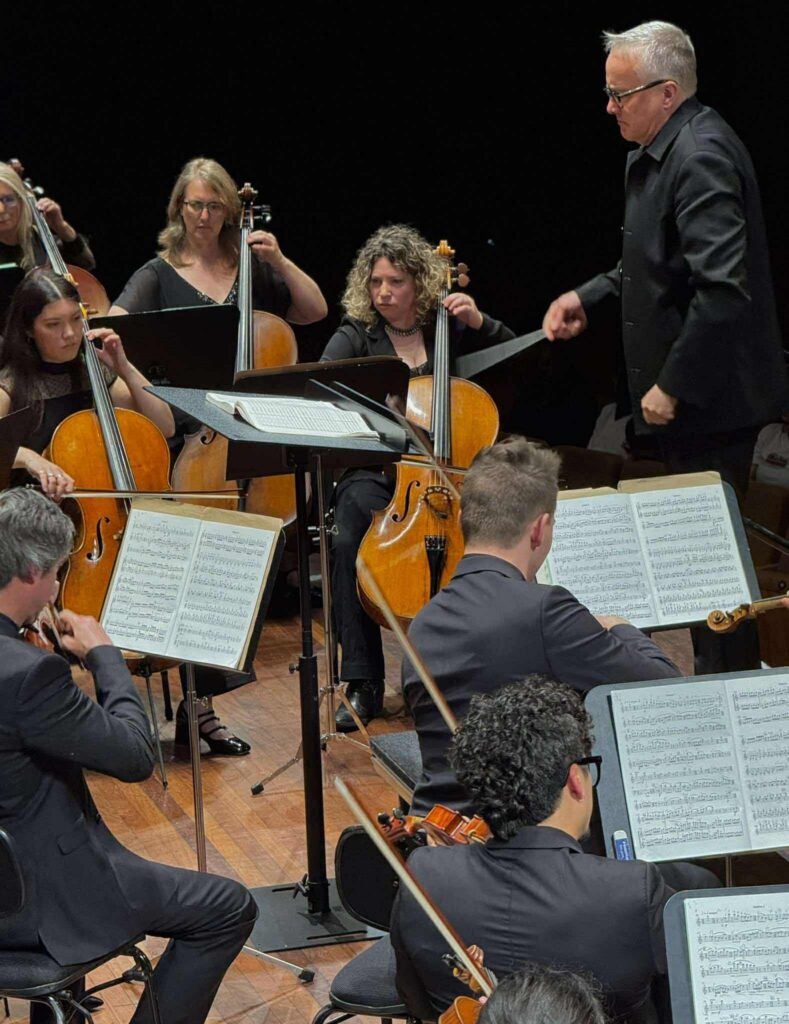 Marc Taddei and Orchestra Wellington – Photo: Andrew Best
Marc Taddei and Orchestra Wellington – Photo: Andrew Best Orchestra Wellington Strings play Shostakovich – Photo: Andrew Best
Orchestra Wellington Strings play Shostakovich – Photo: Andrew Best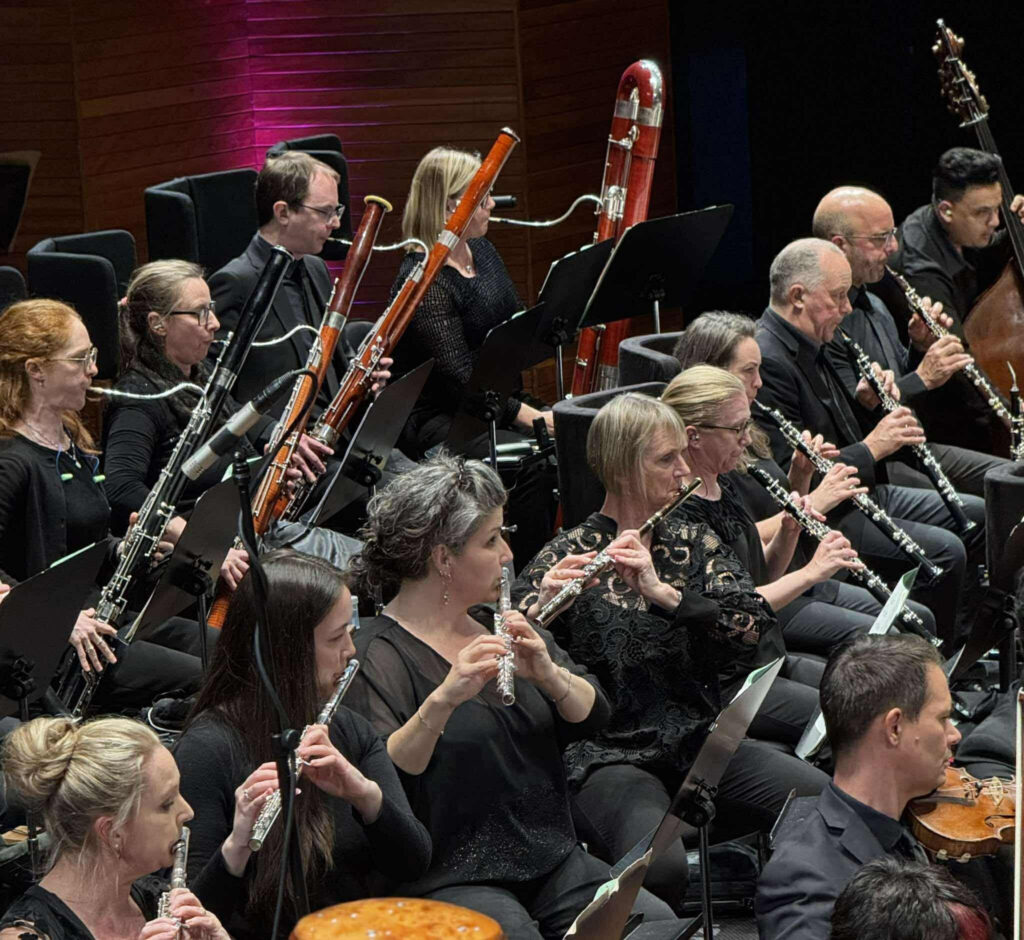 Orchestra Wellington winds – Photo: Andrew Best
Orchestra Wellington winds – Photo: Andrew Best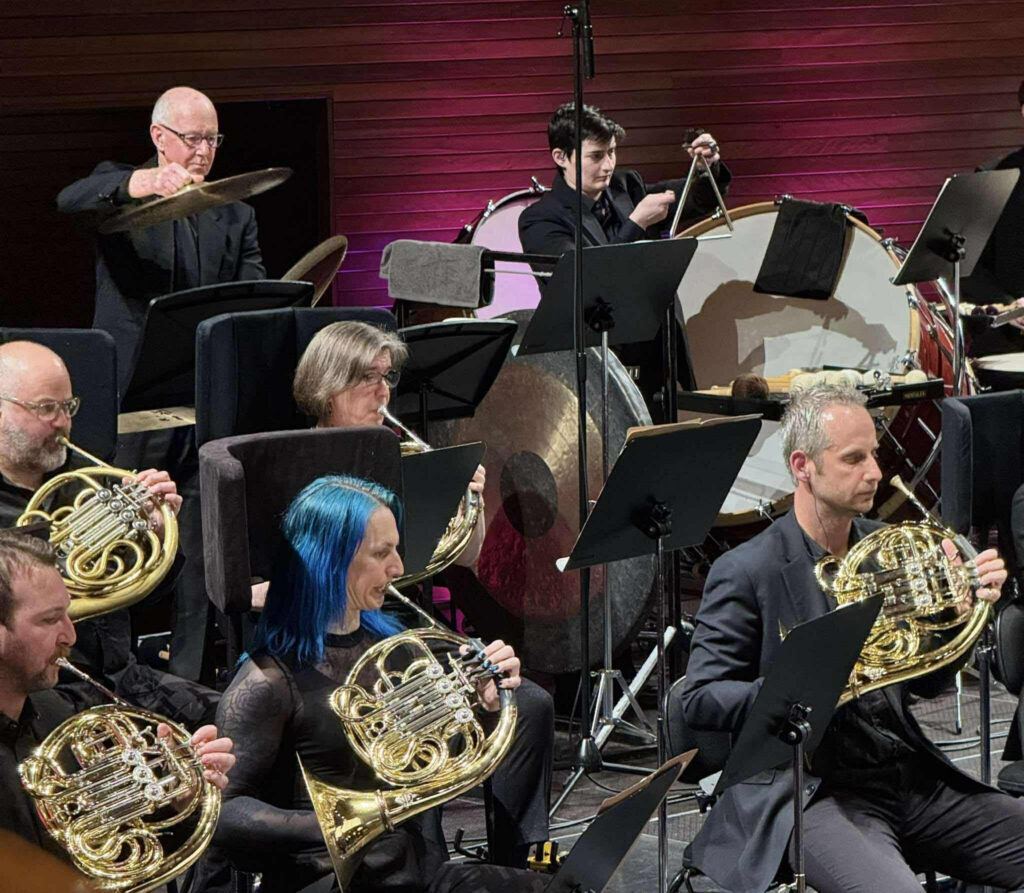 Orchestra Wellington horns and percussion – Photo: Andrew Best
Orchestra Wellington horns and percussion – Photo: Andrew Best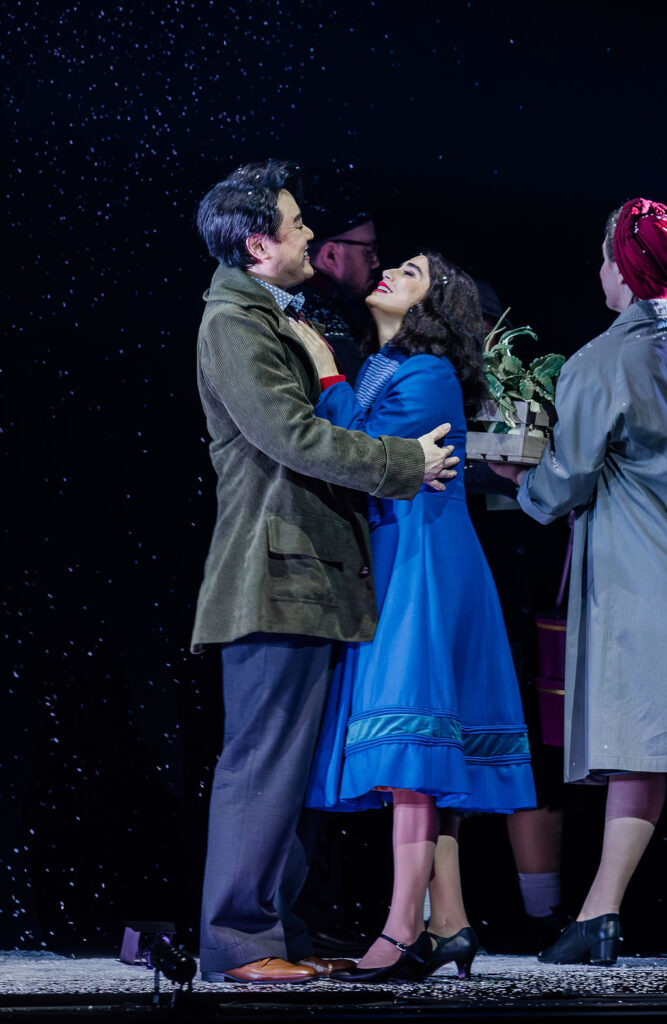
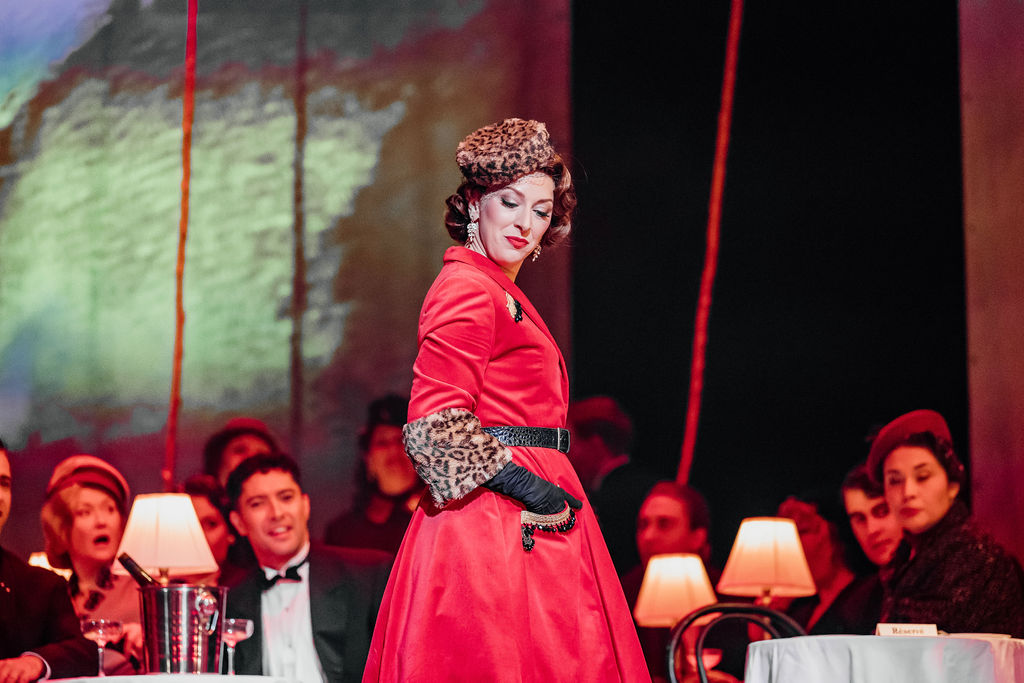 Emma Pearson as Musetta
Emma Pearson as Musetta The First Smile | Gamelan Ensemble – Rattle Records (2024)
The First Smile | Gamelan Ensemble – Rattle Records (2024) Allan Thomas – photo by John Casey
Allan Thomas – photo by John Casey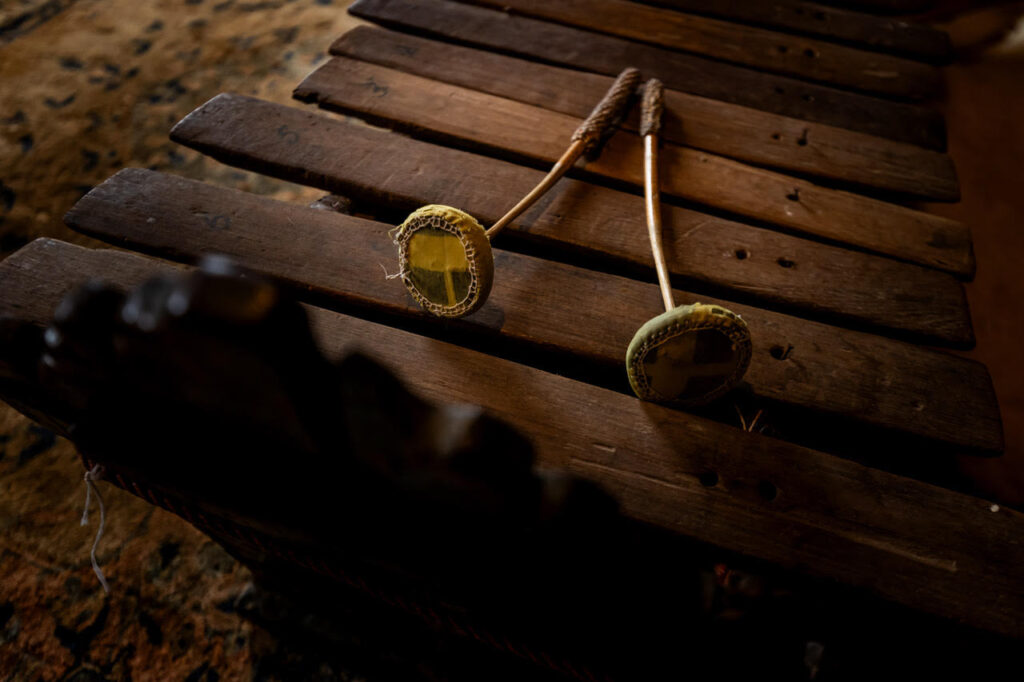 Gambang ( xylophone-type instrument, struck with soft beaters, and with wooden keys unlike other bronze-keyed instruments of The First Smile gamelan )
Gambang ( xylophone-type instrument, struck with soft beaters, and with wooden keys unlike other bronze-keyed instruments of The First Smile gamelan )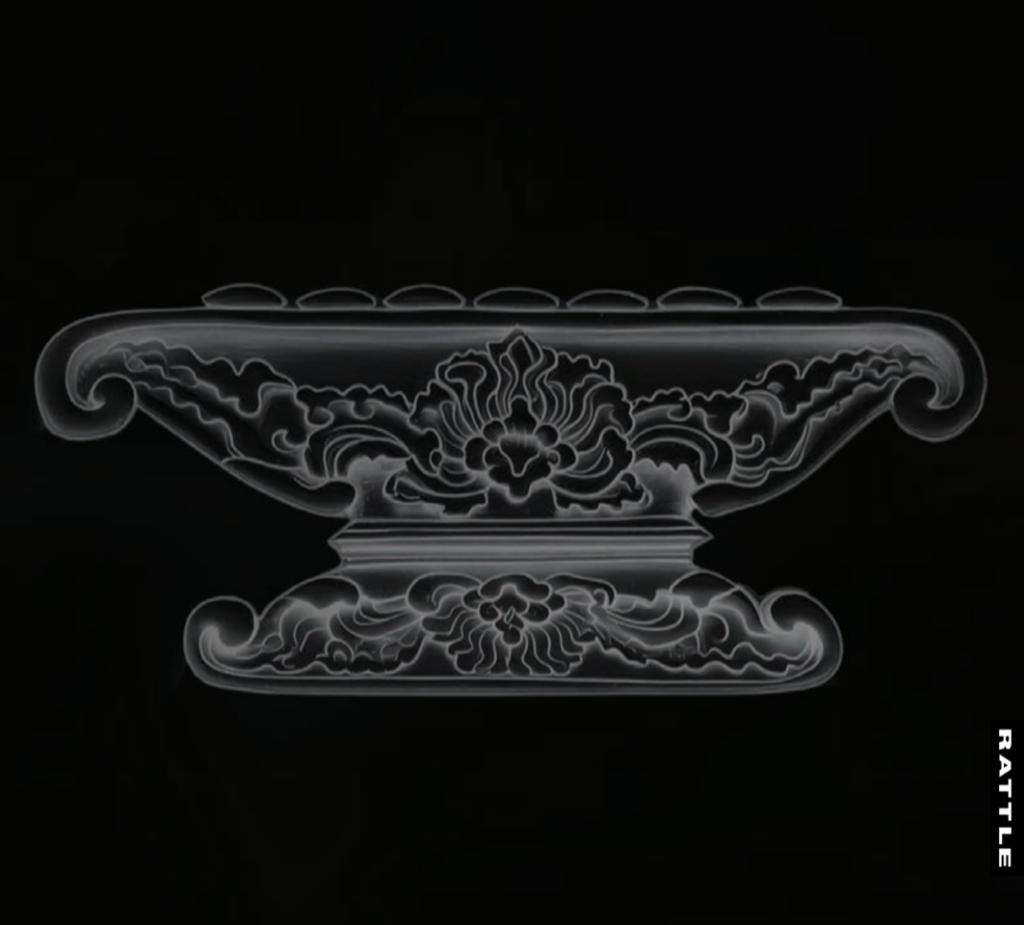 Saron — bronze keyed instrument struck with wooden beater ( drawing by Barbara Lyon, photo John Casey )
Saron — bronze keyed instrument struck with wooden beater ( drawing by Barbara Lyon, photo John Casey )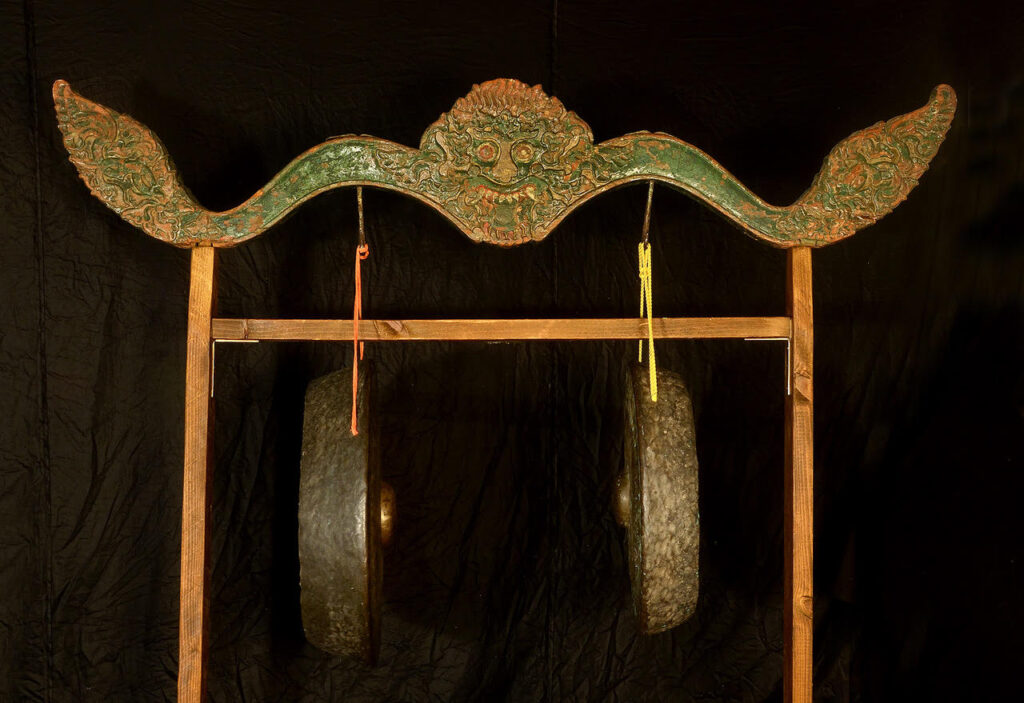 Gong (l) Kempul (r) : ( photo John Casey)
Gong (l) Kempul (r) : ( photo John Casey)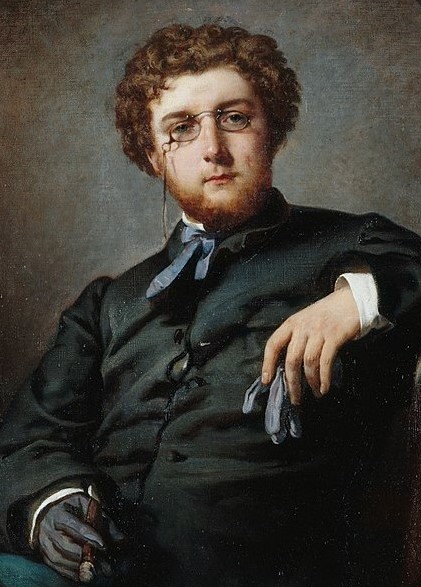
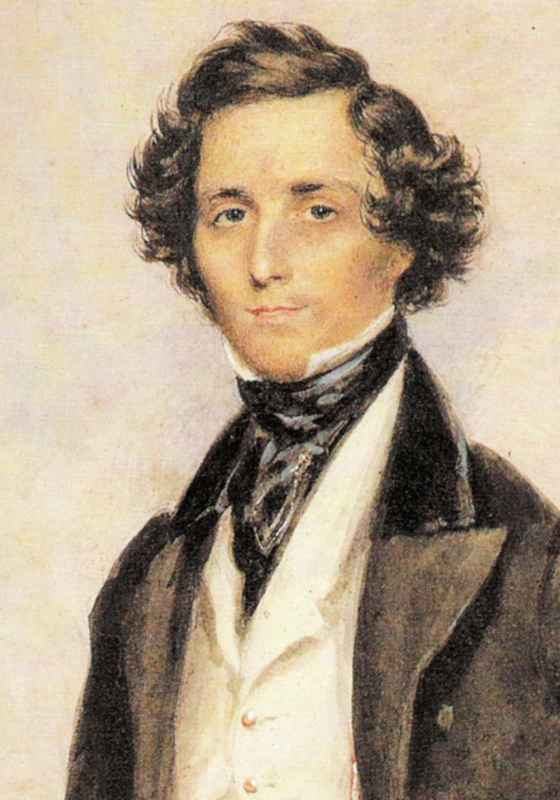
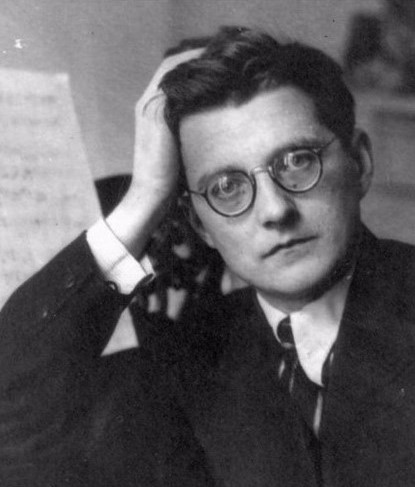
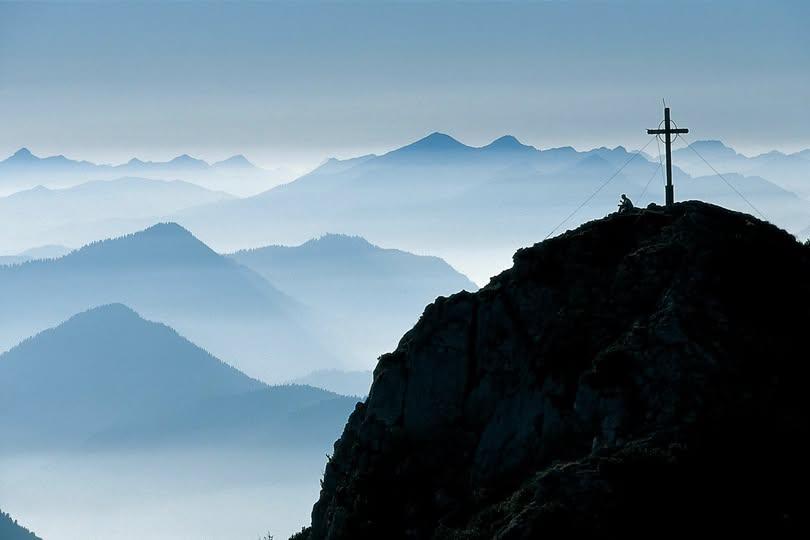 FRANZ JOSEF HAYDN – The Seven Last Words of Our Saviour on the Cross (1786-7) Image: Bernd Ritschel
FRANZ JOSEF HAYDN – The Seven Last Words of Our Saviour on the Cross (1786-7) Image: Bernd Ritschel